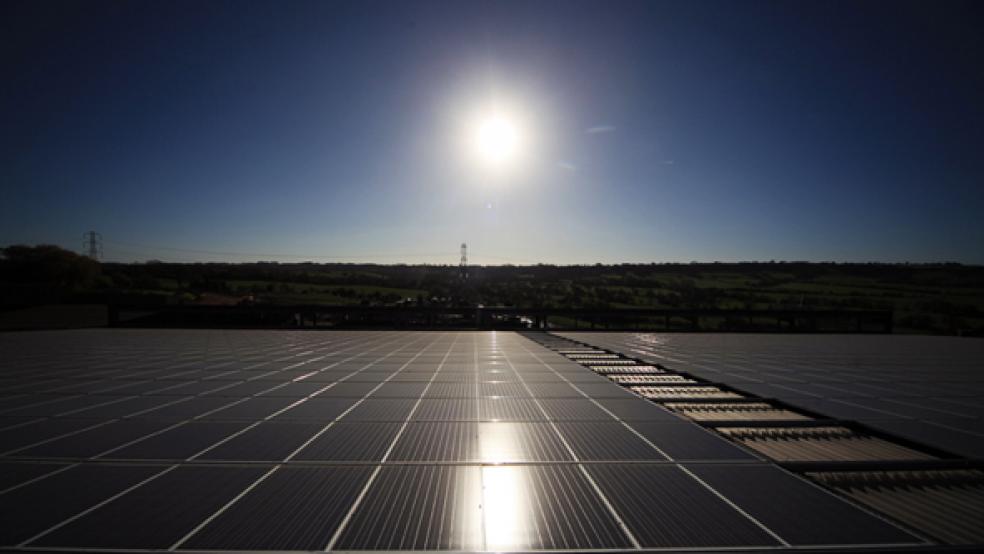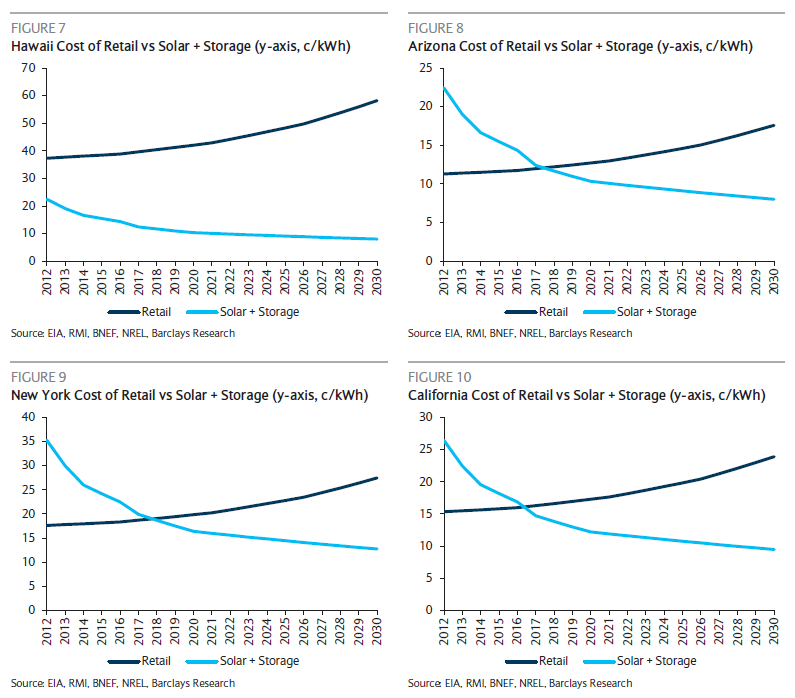The combination of declining costs for solar panels and dramatic improvements in both price and capacity of lithium ion batteries is bad news for the giant electrical utilities that currently supply the majority of power to homes and businesses in the United States.
In a research note released last week, analysts in the credit research division of Barclays investment bank warned that the day when cost-effective solar power will be available to the individual consumer is closer than many expect, and will create huge disruptions for existing electrical utilities.
Related: Solar Powered Roads Can Pave a Path to Energy Riches
“In the 100+ year history of the electric utility industry, there has never before been a truly cost-competitive substitute available for grid power,” said a note authored by a team of analysts led by Yung Chuan Koh. “We believe that solar + storage could reconfigure the organization and regulation of the electric power business over the coming decade.”
In fact, the authors note, solar power has already become cost-competitive with traditional grid power in Hawaii, where prices per kilowatt hour of solar-generated power are less than half of grid power. The Barclays team believes that solar will reach parity with grid power in California by 2017 and in New York and Arizona by 2018. In the years following, multiple states join the group until, by 2024, electrical utilities in all but a handful of states will face major competition from solar power.
The reason for solar’s sudden surge in competitiveness, the authors say, is two-fold: photovoltaic (solar) panels are becoming cheaper, and the lithium ion batteries, like those used to power electric cars, have become both cheaper and more efficient.
Related: The Greening of the Pentagon Takes a Big Step Forward
This combination has solved two of solar power’s biggest problems: upfront cost and continuity of power. In the past, many who would have liked to use solar power were put off by the cost, which in some cases would take many years to recoup through reduced electric bills. Others were troubled by the unreliability of the power source – without the availability of copious storage, solar could only be counted on during the limited time in which direct sunlight was available.
With both of those constraints going away, Koh and his co-authors note, there is virtually no way the electricity business won’t see major disruption in the coming years, and they warn that “the market can turn very quickly.”
Top Reads from The Fiscal Times






